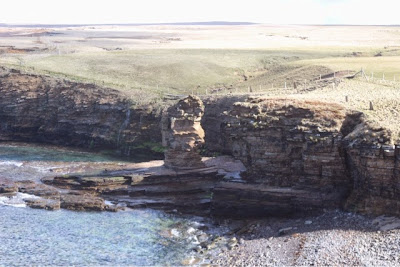A quick Google when we got home and the recipe was located. It looked good but had a difficult to get ingredient, dried pears (soaked overnight in White Rum). Another Google and I came across a variant, using dried sour dried cherries soaked in Lapsang Souchong tea). I loved the sound of the smokiness of the tea combining with the almonds of the marzipan. But sour dried cherries proved to be as elusive to obtain locally as dried pears: however, I did have dried cranberries to hand. So, I gave it a go and here's the recipe for Lapsang Souchong Marzipan Fruit Cake, adapted by me from the adaption by maisoncupcake.com of the original Marzipan Fruit Cake recipe from Nigella Lawson. It's easy to make and tastes pretty good.
Ingredients
500ml Lapsang Souchong tea (strong)
250g Sultanas
125g Dried cranberries65g Desiccated coconut (unsweetened)
400g Marzipan
65g Ground almonds
Zest of 1 large orange
220g Plain flour
125g Caster sugar
125g Butter (softened)
3 large eggs
2 teaspoons Orange Blossom water
Method
The quantities above were enough for a 2lb loaf tin and a little extra over for a 'taster' in a 1/2lb tin, both lined with grease proof paper.
1. Cut the marzipan into small cubes and put in a freezer for at least 1 hour. This makes sure that the marzipan stays in chunks during the mixing process.
2. Make a strong brew of lapsang souchong (loose leaf not tea bag!)with boiling water in a jug. Mix the sultanas and cranberries in a large mixing bowl and pour the tea over. Leave to soak for 30-40 minutes (or until the cranberries are soft) and then drain the excess liquid away.
3. Preheat the oven to 140C.
4. Beat together the almonds, orange zest, flour, butter, sugar and eggs. Add the drained fruit, orange blossom water and cubes of marzipan and mix well by hand, but not too vigorously.5. Spoon the rather thick cake mix into the tin and spread to the edges. It doesn't rise that much so the tin can be filled pretty much to the top.
6. Bake in the middle of the oven for about 1 hour 45 minutes. I kept an eye on it after 90 minutes and kept checking it was cooked by the old 'cleaning knitting needle' test. I covered the top with foil to prevent burning for the last 10 minutes or so. The smaller 'taster' was done in around an hour.
7. Leave to cool in the tin and then wrap in cling-film until needed.
And here's what the inside of the 'taster' looked like. OK, not symmetrical but I just slapped the mix in the smaller tin when it became apparent that I had some left over. The 'real thing' was destined for a local community 'pop-up cafe'. so we'll be counting bodies tomorrow.

























































